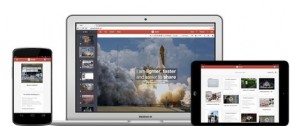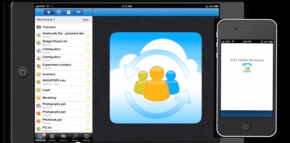 Don’t let the government shutdown get YOU down! Here’s some ways to stay sharp AND make some money…
Don’t let the government shutdown get YOU down! Here’s some ways to stay sharp AND make some money…
Category: Entrepreneurship
The Parking Attendant Problem (Identifying Your Passions, Part 2/2)
Watch me discuss the so-called “Parking Attendant Problem” on YouTube here:
Missed part one of this series where I discussed how you can identify your passions before sitting down to start your business? Watch it on AT&T’s Networking Exchange blog here.
 Today I’m going to talk about the so-called “Parking Attendant Problem” which is a way to help you figure out how to pursue your dreams and goals while you still have a job. While some people have what it takes to just jump out there and risk it all on a crazy business or idea, that’s not for everyone. I’m personally a little more conservative with how I approach risk, and I like to be on the safe side of things and calculate that risk.
Today I’m going to talk about the so-called “Parking Attendant Problem” which is a way to help you figure out how to pursue your dreams and goals while you still have a job. While some people have what it takes to just jump out there and risk it all on a crazy business or idea, that’s not for everyone. I’m personally a little more conservative with how I approach risk, and I like to be on the safe side of things and calculate that risk.
The App Culture That’s Affecting Today’s Business Environment
 The use of smartphone apps by enterprise employees is not an isolated or passing trend. Overall, the rising app culture is seen as good news, but how do you avoid the pitfalls and what does the phenomenon presage for the future of work?
The use of smartphone apps by enterprise employees is not an isolated or passing trend. Overall, the rising app culture is seen as good news, but how do you avoid the pitfalls and what does the phenomenon presage for the future of work?
Consumerization of corporate IT is having a profound impact on workplace culture and business models. Employees are energized by greater freedom and flexibility while enterprises are rewarded with efficiencies and enhanced services. While this new app culture brings security risks, privacy issues and employee productivity concerns to address, by and large, it’s regarded as a positive shift.
How The New Normal Is Changing The Conventional Workplace
In fact, according to a recent study by the Economist Intelligence Unit, four out of five organizations believe app culture will have a net positive effect on their business, although the adoption of app culture is far from uniform.
Read the report to learn what sets the early adopters apart, why the C-suite are the chief cheerleaders for app culture, and what this cultural shift could mean for your business.
Read the complete report at AT&T’s Networking Exchange Blog.
This is a sponsored post from AT&T.
The Future of Publishing: Ebooks, E-Singles and Their Potential for Business

Davar Ardalan is the Senior Producer of NPR’s Tell Me More, and author of the recent iBooks-exclusive title, The Persian Square, a digital book that culls together over 30 media files including audio and video, weaving a modern, multimedia tapestry of Iranian American history going back to the 1800s. Ms. Ardalan contributed the guest post below.
It’s hard to define today’s media architecture, but the success of Amazon’s Kindle Singles and steady sales for the digital publishing start-up Byliner prove that Americans are ever more eager to dive into an electronic book for their reading pleasure or for some in-depth news.
In 2012, ebook sales made up over 22 percent of the U.S. publishing industry’s net revenue, according to The Association of American Publishers. Media companies looking to diversify their revenue stream might want to take note. According to The New York Times, Amazon sold five million copies of Kindle Singles since it opened in January 2011. Amazon created an e-singles digital platform back in 2011, allowing writers of non-fiction and fiction to publish original writings between 5,000 and 30,000 words. These e-singles also known as e-shorts or Quick Reads by Apple are meant to be read in one sitting.

The New York Times has also entered the ebook business. In December 2012, The Times teamed up with Byliner, a leading publisher in the e-shorts space and launched it’s own line of ebooks featuring The Times culture, sports, business, science and health stories. The Times/Byliner collaboration seemed like a “perfect fit” says Byliner Co-Founder and Editor-in-Chief Mark Bryant. “Byliner is all about ambitious storytelling that lives in the space between magazine and books, and the opportunity to tap into such a deep, smart talent pool at The Times has made our partnership all the better.”
Two examples of successful Times/Byliner collaborations in the past six months include David Leonhardt’s Here’s the Deal, detailing the ever-contentious debate over the deficit, and Adam Liptak’s To Have and Uphold, on the struggle over same-sex marriage.
Bryant says both of these original Times/Byliner productions have been particularly well received, “There is a sweet spot for these types of stories — original, well written, ambitious narratives on some of the most compelling issues of the day.” He notes that declining newspaper and magazine revenues have meant fewer and fewer opportunities for writers to publish ambitious narratives.
Bryant says the addition of the mobile reading experience and it’s new subscription reading service or “streaming reading” make digital short stories even more relevant and accessible.
“Stories are being squeezed into tighter and tighter spaces,” Bryant notes, adding that readers are looking for great personalized recommendations that help them “cut through all the clutter and noise and also takes into account how much time they have to read.”
Get Popular On Twitter: How to Use Promoted Tweets
 Twitter has established itself as the go-to place for what’s happening now—whether it’s breaking news or what your friends had for breakfast. We’ve talked before about some organic ways to become part of the conversation, whether you’re marketing a made-for-tv movie or trying to find twitter influencers. Twitter itself offers another option: Promoted Tweets.
Twitter has established itself as the go-to place for what’s happening now—whether it’s breaking news or what your friends had for breakfast. We’ve talked before about some organic ways to become part of the conversation, whether you’re marketing a made-for-tv movie or trying to find twitter influencers. Twitter itself offers another option: Promoted Tweets.
Promoted Tweets are the native advertising platform for twitter: a way for you to get your message out there in the normal twitter format that increases the exposure of your tweets beyond your normal twitter followers. You’ve probably noticed these in your own twitter feed: they appear up at the top of your feed sometimes, and if you’re searching for certain kinds of tweets, you’ll notice them early on in the twitter search results.
This kind of exposure can be incredibly useful for your business if you know what you’re doing. Twitter identifies two main goals for your tweets: driving awareness for your business and driving a particular action via twitter. Articulating your goals for the specific twitter campaign is essential. It lets you determine whether the campaign has been successful for you, whatever those goals might be.
4 Ways To Reach New Customers, Wherever You Are
 Lisa Durrett is Lead Marketing Communications Manager, Small Business at AT&T. You can find more blog content from Lisa and other experts on emerging technologies on the AT&T Networking Exchange Blog. AT&T has sponsored the following blog post.
Lisa Durrett is Lead Marketing Communications Manager, Small Business at AT&T. You can find more blog content from Lisa and other experts on emerging technologies on the AT&T Networking Exchange Blog. AT&T has sponsored the following blog post.
I’m in awe of my yoga instructor. She takes the word flexibility to a whole new level. This mother of five owns four yoga studios, manages a staff of instructors, has a blog that she updates daily, writes a fitness column for the local newspaper, and even has time to volunteer at her kids’ school.
I’m equally impressed by her ability to keep her classes consistently full. She always finds time to reach out to new customers, whether by responding to inquiries in between classes or posting offers to her website through her smartphone while on the treadmill. An expert multitasker? With today’s need for speed, entrepreneurs don’t really have much of a choice. Small business expert and entrepreneur Bill Rancic says it’s imperative to always take advantage of technology, so you are able to work smarter, not harder.
If you’re not as innately flexible as my yoga instructor, here’s how being fully connected in the wireless age can help you grow your business:
Respond to prospects anywhere. Yes, you can say you’ll carve out time to do nothing but respond to customer inquiries, but, the reality is, something always comes up. If you have a smartphone that allows you to easily monitor and respond to email, your social channels, and consumer review sites, you can get this off your to-do list while also better serving your customers. If you network your team’s devices wirelessly, you can share Internet access, files, printers, and more, which can help you to delegate some of these important tasks.
Can Bunkr Kill PowerPoint?
 We’ve written before about the ubiquity of Microsoft Office products and their transition to mobile environments. Admittedly, they’ve been a little slow on the uptake, which created an opportunity for a number of companies to develop software meant to replace these seemingly irreplaceable office tools.
We’ve written before about the ubiquity of Microsoft Office products and their transition to mobile environments. Admittedly, they’ve been a little slow on the uptake, which created an opportunity for a number of companies to develop software meant to replace these seemingly irreplaceable office tools.
Bunkr is one such of those tools—a new product from a French startup that explicitly wants to be a PowerPoint killer. Whether it can dethrone the reigning champion of the slideshow is a separate question, but it does offer a lot of nifty features if you’re looking for an alternative to Office. For starters, Bunkr looks and feels a lot like PowerPoint. If you’re familiar with using that, making a switch to something new shouldn’t feel that weird. But Bunkr offers a few features that make it stand out. Read More
Bring Sanity to your Inbox with Sanebox
 About a year ago, the consulting firm McKinsey and Company conducted a study that concluded about 28% of the average workers’ time is spent on email. Thinking about my own email experience, I know a lot of those emails are basically useless. Or, at least, things that don’t have to be dealt with immediately.
About a year ago, the consulting firm McKinsey and Company conducted a study that concluded about 28% of the average workers’ time is spent on email. Thinking about my own email experience, I know a lot of those emails are basically useless. Or, at least, things that don’t have to be dealt with immediately.
SaneBox is an inbox management program that wants to help you deal with your chronic email bloat. Compatible with Gmail, Apple Mail, Outlook, Yahoo Mail, and most other web-based email programs and email clients you might use, SaneBox gives you a toolbox to let you manage your email rather than having your email manage you.
There are a lot of products that help you manage your email, but SaneBox has given some deep thought to the problem, and their efforts show. Based in part on the principles of the popular productivity principles of Getting Things Done, SaneBox is more than a simple email filtering tool like Gmail’s priority inbox.
Though it does filtering quite well, too, which is the foundation of most email management tools. SaneBox defaults to two levels of importance, but is able to manage up to five. And while their importance algorithms work well on their own, SaneBox allows you to connect to you various social media accounts to better learn what’s important to you and what isn’t. Best of all, it summarizes your unimportant emails for you so you can decide quickly what needs your attention and what you can ignore.
But what makes SaneBox really interesting is what it can bring to your inbox besides basic filtering. One of my favorite features is the summary of email activity, which includes the summary of your latest unimportant emails, but more powerfully, provides a lot of statistics on your email behavior, which lets you think critically about how much time you’re spending and the load of messages you’re dealing with. A richer understanding of how much time I can expect to spend on email helps to plan my workload—and lets me consider whether I really need to read everything I think I need to read.
There are a whole host of other great features: one-click unsubscribing from email lists you don’t want to be on anymore, automated nagging features that will email you to let you know if an important email hasn’t been replied to, cloud-based attachment storage, and others. It also works with the email on your mobile devices, so you don’t have to worry about scrolling through a ton of useless messages on your phone.
SaneBox will cost you $5 per month (and you can try it for free for 14 days), but given that the company estimates that it saves the average user two hours per week, it just might be worth it to you.
CUBED: Work smarter on your smartphone with “Documents to Go” app
Stop me if you’ve heard this one before: entrepreneur Jodie Yule is constantly traveling and working from her smartphone, but needs a way to get even more done while on the go. Right now, she’s juggling an endless stream of office documents coming in, but she has to wait until she’s back at the office to work on anything. Since she has a smartphone on her all the time, wouldn’t it make more sense if she was able to squeeze some work in during all those little moments in-between deliveries of her product, a weekly newsletter delivered to restaurants and coffee shops called “Coffee News”?
HLN: Online Courses to keep skills sharp during the summer!
Whether you’ ve got kids going on summer break and you’re worried about whether or not they can keep their skills sharp over the next few months, or you’re an adult who wants to learn more, tackle a new field, or just dip your toes into a subject matter, online educational tools and courses are an amazing asset. There are a ton of cool things about these sites & getting an Education Online. For one, you’ve got a flexible schedule. There are no fixed classes or deadlines, so you can work at your own pace. Another advantage is being able to work from anywhere—home, the library, a coffee shop, whatever! Even for sites that charge, it still costs a fraction to learn online compared to what you’d have to spend to take even a continuing ed course at the local community college, and you further save on gas and time by not having to commute to drive your kid to their classes. Finally, online courses can be updated frequently so there’s no need to worry that you’re getting an expired education.

